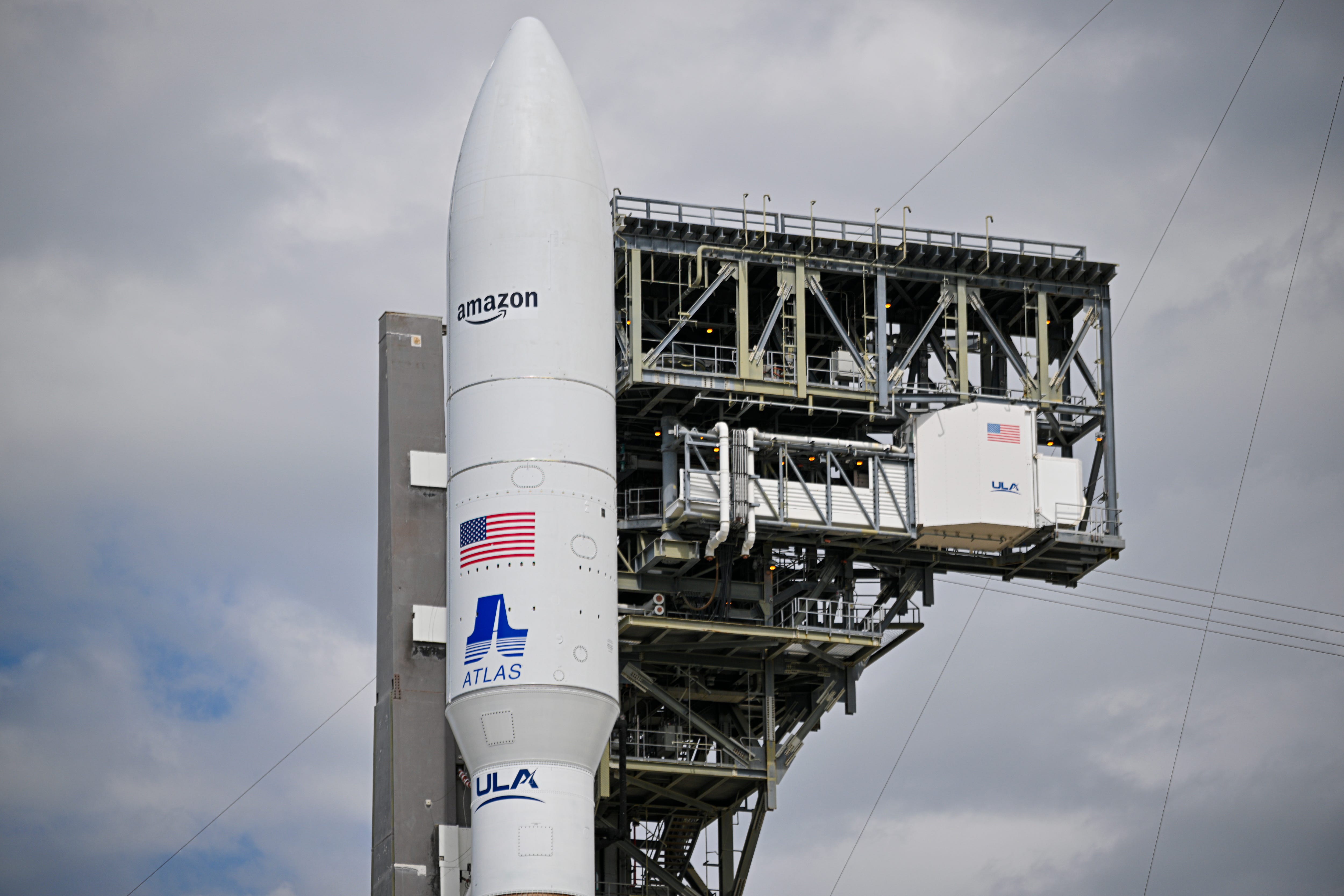
Miguel J. Rodriguez Carrillo/Getty Images
Amazon is seeking to expand its already giant reach with Project Kuiper, an internet satellite venture. Kuiper will directly compete with SpaceX’s Starlink, furthering the billionaires Jeff Bezos and Elon Musk‘s decadeslong rivalry.
The $10 billion venture aims to bring broadband internet to tens of millions and, if successful, could support some of Amazon’s other goals. The project gets its name from the Kuiper Belt, a part of the solar system past the eight major planets. Kuiper has secured launches from various aerospace companies, including Blue Origin, which is owned by Bezos, Amazon’s founder and executive chairman.
Here’s everything to know about Project Kuiper’s founding, operations, and competition with Starlink.
Project Kuiper’s founding and technology
Kuiper promises to bring broadband internet access to tens of millions of people, especially those in underserved areas, Amazon says. The company says its services will help close the digital divide, since satellite internet brings faster connections to rural communities.
Amazon plans to eventually launch more than 3,200 satellites through Kuiper, which is based out of Washington. Kuiper has three primary components, according to Amazon: infrastructure on the ground, satellites, and customer terminals.
Ground infrastructure links the satellite network and the internet. The satellites, which sit in low orbit, transmit data between the ground infrastructure and users. Each user installs an outdoor antenna, or a “customer terminal,” that connects to the satellite and delivers WiFi.
Kuiper will work with Amazon Web Services, the company’s cloud business and the base of its profits. The ground services will connect with AWS, meaning Amazon could own all of the infrastructure from the server to the satellite in space and have more control over pricing, quality, and reach.
It’s not just AWS — Kuiper also has the potential to work with and boost other Amazon services. Alexa, for example, relies on an internet connection. Kuiper could bring the voice assistant to people who currently lack internet. The same goes for bringing the internet to new potential Amazon Prime members and general customers.
Timeline and launch plans
Amazon began researching Kuiper in 2018, and the Federal Communications Commission gave the company a license to start sending satellites to space in July 2020. Kuiper’s initial launch of prototype satellites was scheduled for late 2022 but was delayed when Amazon changed the rocket-delivery system. Eventually, Amazon sent its first two Kuiper prototype satellites into orbit in October of 2023. Those satellites were used to test parts of the Kuiper system before deploying the whole network.
On April 28, 2025, Amazon launched 27 satellites and the company said it had established communications with all of them. A rocket from United Launch Alliance, a joint venture Boeing and Lockheed Martin, sent the satellites into space. Amazon said it has secured more than 80 launches with a range of rocket companies in addition to ULA, including Blue Origin, SpaceX, and the French company Arianespace.
When it approved Kuiper’s plans, the FCC said Amazon needs to deploy at least half of its satellites by the end of July 2026.
Kuiper internet will become available to customers before the end of 2025, if launches stay on schedule and all goes to plan. The project is hugely expensive — Amazon has invested $10 billion into Kuiper — but could also be quite profitable.
Unlike Amazon’s core e-commerce business, which has thin margins, broadband services could have an 80% margin, BI previously reported.
Project Kuiper vs. Starlink
Bezos’ Kuiper and Musk’s Starlink have the same basic goal: to provide fast broadband satellite internet, mainly to people in remote areas. Both services require users to install antennas.
Musk’s Starlink has a big head start in nearly every respect. By the time Kuiper launched its first 27 satellites, Starlink had thousands of satellites in space and millions of users. Its web service is booming, and Musk has said he eventually hopes to form a constellation of 42,000 satellites. The service has geopolitical importance, too; Musk sent thousands of Starlink terminals to Ukraine during the early days of its war with Russia, for example.
The broadband service is a big part of SpaceX‘s bottom line, with a projected revenue for the fiscal year 2025 of $12.3 billion.
As Kuiper races to catch up to Starlink, the billionaire space race will continue to take on new technological and global significance here on Earth.
The post What to know about Project Kuiper, Amazon’s satellite internet venture appeared first on Business Insider.




